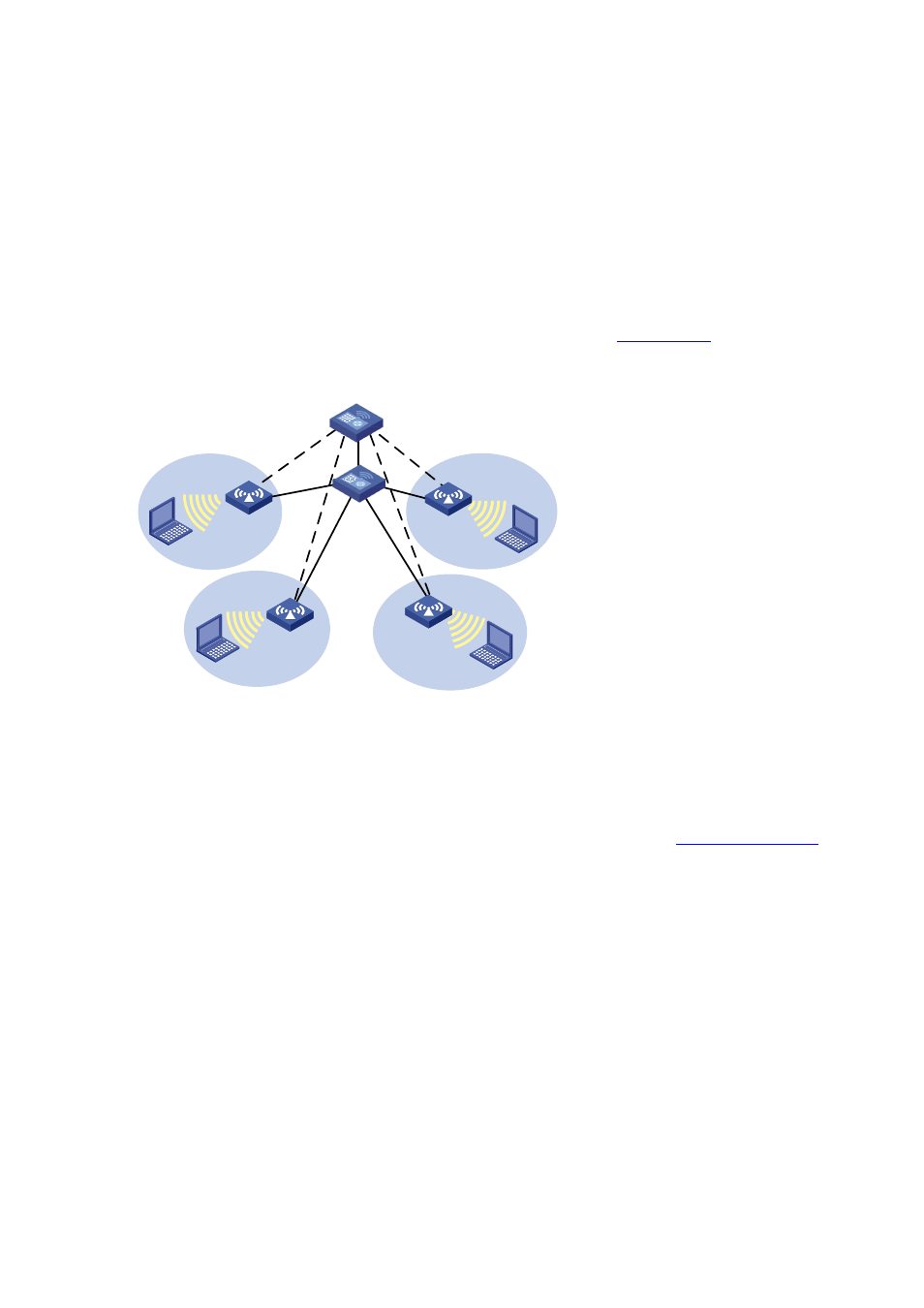H3C Technologies H3C WX6000 Series Access Controllers User Manual
Page 577

49-2
In large-scale networking, acting as the key access point and service entrance, an AC is required to
provide high reliability. 1+1 AC backup mechanism can ensure that the information flow is not affected
and thus the WLAN services are not interrupted in the case of single point failure.
1) WLAN dual link establishment
In the H3C WLAN dual link mechanism, in order to achieve AC backup, an AP needs to establish two
tunnel links with two different ACs. Only the AC which works in active mode provides services to the AP
and the standby AC acts as the backup AC. If the master AC fails, APs should quickly use the services
provided by the standby AC. A fast link fault detection mechanism is used between these two ACs,
which ensures that failure of the master will be detected quickly by the backup AC. The two ACs can
both work in master mode for different APs. For configuration, refer to
.
Figure 49-1 Dual link topology
AC 2
AP 4
AP 1
AP 2
AP 3
AC 1
In the above figure, AC 1 and AC 2 backs up each other. AC 1 is working in active mode and providing
services to AP 1, AP 2, AP 3 and AP 4. AC 2 is working in standby mode. APs are connected to AC 2
through backup links. By configuring AC backup, when AC 1 is down, AC 2 converts to work in active
mode even after AC 1 is up again, in which case, AC 1 is in standby mode. However, this is not so if an
AC is configured as the primary AC. For description about primary AC, refer to
2) Primary AC recovery
Primary AC provides a mechanism to ensure that the primary AC is chosen in precedence by APs as an
active AC. When the primary AC goes down, the APs switch to connect to the standby AC. As soon as
the active AC recovers, the APs automatically connect to the primary AC again.
